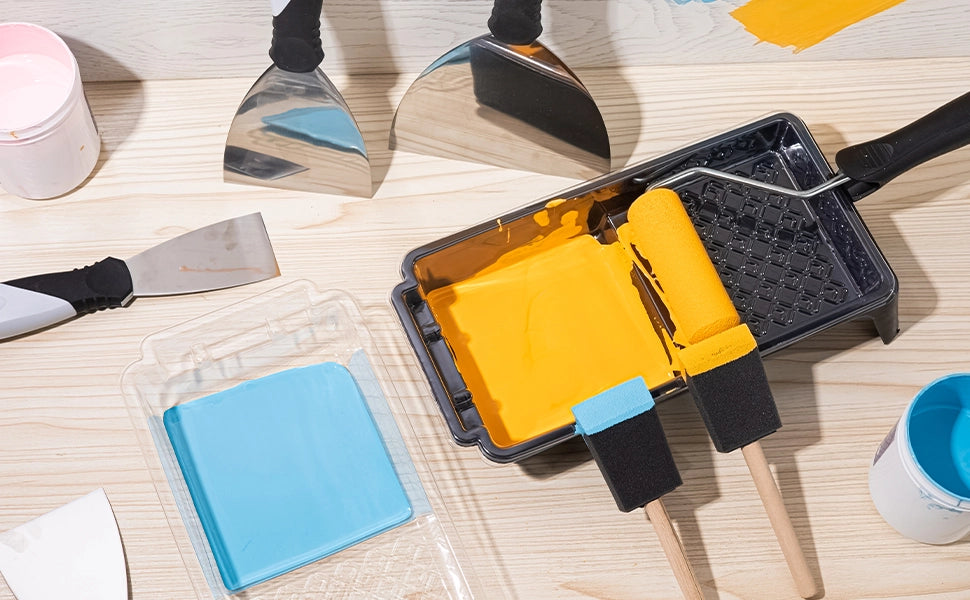Living across different parts of the country has taught me one thing: Paint doesn't peel because it's "bad luck"—it peels because of climate challenges and shortcuts in prep. From the steamy humidity in Florida that traps moisture under paint to the extreme temperature swings in the Midwest that cause expansion and contraction, U.S. homes face unique stressors. Add in dry, sunny Southwest conditions that bake paint brittle or salty coastal air that corrodes surfaces, and paint peeling prevention becomes essential for durable painting. I've repainted siding after a peeling disaster, and trust me, doing it right the first time saves money and headaches. Let's break down the causes and fixes, region by region.
Why Paint Peels in Different U.S. Climates
Peeling starts when moisture gets trapped behind the paint film, breaking the bond with the surface. In the humid South (think Georgia or Louisiana), high moisture levels seep in if the paint isn't breathable. Up North in places like Minnesota, freeze-thaw cycles push water into cracks, then expand and pop the paint off. Out West in arid Arizona, intense UV rays degrade the binders in paint, making it chalky and prone to flaking. And on the coasts? Salt air accelerates corrosion on metal or wood. The common thread? Poor surface prep and mismatched products. Skipping steps here is the biggest mistake leading to paint peeling.
Surface Preparation: The Foundation of Durable Painting
No matter where you live, prep is 80% of the battle for paint peeling prevention. Start by power washing the surface to remove dirt, mildew, and loose paint—1350-2000 PSI works without damaging siding. Scrape off all flaking areas with a carbide scraper; don't just paint over them. Sand glossy or rough spots with 80-120 grit paper to create "tooth" for adhesion. In humid areas, treat mildew with a bleach solution (1:3 bleach to water) and let dry fully.
For wood siding common in older Northern homes, fill cracks with exterior spackle and prime bare spots. In dry climates, dust is your enemy—wipe down with a tack cloth. Always prime: Use a high-quality, stain-blocking primer like Zinsser or Kilz to seal porous surfaces and block moisture. I once skipped priming on a sunny Southern porch—big regret when peeling started six months later. Prep might add a day, but it ensures durable painting that lasts 7-10 years instead of 2-3.
Choosing Paint for Your Region's Weather
Not all paints are created equal—pick ones formulated for your climate to boost paint peeling prevention:
-
Humid South/Southeast: Go for 100% acrylic latex with mildewcide additives (e.g., Behr Marquee or Sherwin-Williams Duration). These are breathable, allowing moisture vapor to escape.
-
Cold North/Midwest: Elastomeric paints or those with freeze-thaw resistance handle expansion. Look for labels mentioning "low-temp application" down to 35°F.
-
Dry Southwest: UV-resistant paints like Sherwin-Williams Emerald with high solids content fight fading and chalking.
-
Coastal Areas: Paints with corrosion inhibitors, often labeled for marine environments.
Always choose exterior-grade with at least 45-50% volume solids for thickness and durability. For interiors affected by bathroom steam or kitchen humidity, eggshell or semi-gloss finishes wipe clean and resist moisture better.
Application Techniques for Maximum Longevity
Even the best paint fails without proper application. Paint in ideal conditions: 50-85°F, low humidity, no direct sun. Back-roll after spraying for even coverage, or use a quality brush/roller combo. Apply two coats minimum—thin and even, not gloppy. In hot, dry areas, work in shade to prevent flash drying. For durable painting in variable climates, add a paint conditioner like Floetrol to slow drying and improve flow.
Maintenance Tips to Prevent Future Peeling
Once done, maintain it: Inspect annually for cracks, caulk gaps promptly, and wash siding gently every couple years. Touch up small peels immediately to stop spread. In snowy regions, keep gutters clean to avoid ice dams pushing water under paint.
Real Stories from Across the Country
A friend in Texas switched to elastomeric after repeated peeling from heat—problem solved. In rainy Seattle, breathable paint ended mildew-related flaking. These aren't miracles; they're smart choices for paint peeling prevention.
Final Thoughts
Peeling paint doesn't have to be inevitable, no matter your U.S. zip code. Focus on thorough prep, climate-smart products, and proper techniques for truly durable painting. I've seen homes transformed and stay beautiful for years with these steps. Ready to tackle your project? Start with a good scrape and prime—your walls will thank you. What's your biggest peeling headache? Share below!
Keywords: paint peeling prevention, durable painting, exterior paint tips, U.S. climate painting, home maintenance



0 comments